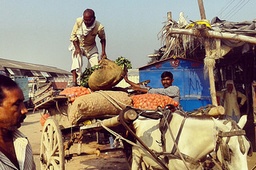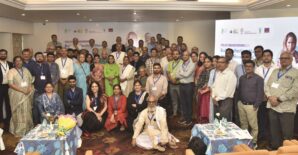With rising concern to meet the growing demand for diversified food of the increasing population, food security has been the top priority on the policy agenda. Over the years, despite the decline in its share in the gross domestic product, agriculture continues to be important in the Indian economy for food security, employment generation and poverty reduction.
In a recent IFPRI discussion paper on Changing Sources of Growth in Indian Agriculture, the authors have shown how the policy shift over the past three decades (1980/1981 to 2009/2010) have stimulated patterns and sources of agricultural growth in India and evaluated their implications for regional priorities for sustainable and inclusive growth.
Since 1995/96 policymakers have been targeting to achieve 4 percent growth for the agricultural sector, but it has been fluctuating over/under 3 percent since the last two decades. P S Birthal, principal scientist at the National Centre for Agricultural Economics and Policy Research (NCAP), highlights that in the 1980s technology was the main source of growth which was followed by crop diversification in the 1990s. The price effect that emerged as strong factor in the 1990s also faded in the following decade, with technology reemerging as an engine of growth in the 2000s.
Over the time it was observed that agricultural policies in India been cereal-centric especially towards wheat and rice. But with change in consumption pattern, income growth and improved infrastructure, the shift towards high value crops played an important role in cushioning agricultural growth. Examining spatial decompositions of growth - the northern region followed a technology-led growth path, while the western and southern regions relied more on diversification in their growth strategy.
Learning from the past, evaluating the present for the future food security of the country, the authors lists its analysis in the study under four dimensions-
- With limited land available for cultivation, sustainable intensification and diversification of agriculture are the options to accelerate agricultural growth.
- Investment in agricultural research and strengthening of service delivery systems are crucial for future improvements in yields of grains and horticultural crops.
- With limited scope for sustaining price-led growth in long run, investments in markets, infrastructure such as roads are necessary to reduce marketing and transaction cost, thus directly benefiting the small farmers.
- Opportunities for small-holder farmers to increase income and escape poverty lie in diversification towards high value crops.
IFPRI’s, P K Joshi, stresses that, “the sustainable agriculture growth must come from technological change and diversification towards high value crops. Dr. Joshi, emphasized that both central and state governments need to take corrective measures to increase investment in agriculture research, and create favorable business environment through enabling policies towards high value agriculture.”



